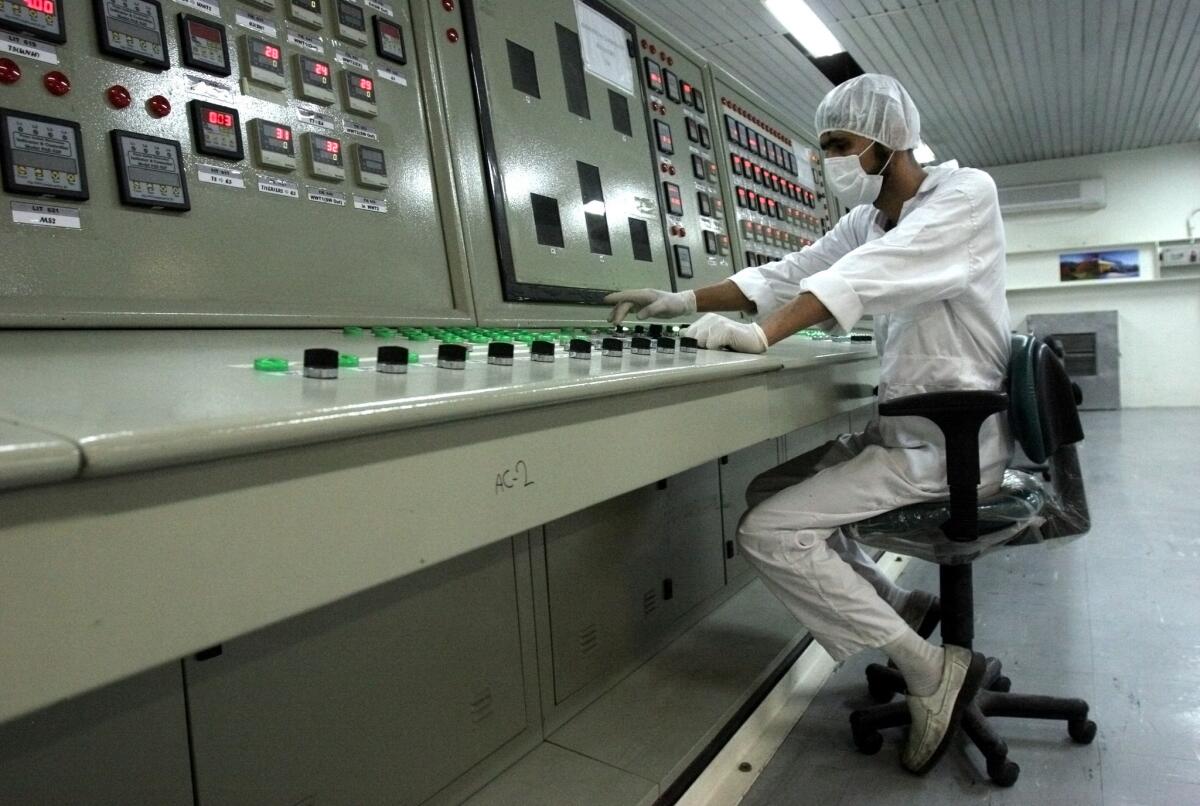On Iran, there’s time

- Share via
On Feb. 26, the United States and Iran will once more resume their diplomatic ritual, in the so-called six-party talks, over Iran’s disputed nuclear program. As the two perennial adversaries eye one another, there are competing paradigms about how to deal with Tehran.
An emerging school of thought suggests that the best means of “testing” Iran is to offer it a final nuclear agreement that presumably promises measurable relief from sanctions for significant Iranian concessions. Iran’s failure to grasp such an offer would then conclusively demonstrate to both domestic and international audiences that the cause of the impasse is not American belligerence but Iranian truculence.
But this approach fails to recognize that an arms-control process is necessarily an incremental one, nor does it offer a practical substitute to the existing step-by-step diplomacy.
Iran’s nuclear program encompasses a vast complex of enrichment facilities, centrifuge construction plants, uranium extraction companies and thousands of scientists working in university and government laboratories. Iran is enriching uranium at both 5% and 20% levels, experimenting with high-velocity centrifuges and seemingly in the process of constructing additional enrichment facilities.
Such a multilayered, multifaceted program can be dealt with only on a piecemeal basis, as the technical details and rules for inspections are too complex to be addressed in a single agreement.
Moreover, should the United States offer Iran a final deal, Tehran still has a right to contest and negotiate its provisions and offer counterproposals. The international community is unlikely to concede to either more sanctions or the use of force until Iran’s objections are taken into full consideration. As such, a grand deal that is supposed to provoke a moment of clarity is likely to be enmeshed in the existing, protracted arms-control process.
Another complication is the advent of public opinion and critical constituencies in Iran devoted to the perpetuation of the program. The growing public sentiment is that Iran has a right to acquire a nuclear capability. As the program matures, it is becoming a source of pride for a citizenry accustomed to the revolution’s setbacks and failures.
Also emerging is a bureaucratic and scientific establishment with its own parochial considerations for sustaining the nuclear investment. A clerical leadership that is dealing with a restive population and empowered security services cannot easily dispense with its nuclear trump card.
All this suggests that the best means of addressing Iran’s nuclear challenge is to mitigate its most dangerous dimensions. The focus should remain on Iran’s high-grade enrichment and its underground nuclear facility nestled in mountains outside Qom. Tehran seems to have conceived an ingenious path to nuclear advancement, one that involves increasing the size and sophistication of its civilian atomic apparatus to the point where it can quickly surge into a bomb. While staying within the rules of the International Atomic Energy Agency’s inspection process, Iran is essentially expanding its capabilities while shielding them under the veneer of legality. Given the fact that much of civilian nuclear technology can easily be misappropriated for military purposes, Iran can construct an elaborate nuclear infrastructure while remaining within IAEA guidelines.
The diplomatic challenge is to derail this path to a nuclear weapon by imposing significant restraints on its program. And this can still be done through a process that proceeds incrementally and sequentially.
U.S. officials would be wise to get out of the crisis mode and put some time back on the clock. The Iran issue always seems urgent, and yet somehow there is always time to deal with it. Washington should acknowledge the obvious, namely, that given Iran’s gradualist approach, it is still years from completing an efficient enrichment infrastructure, constructing a nuclear arsenal and developing a reliable means of delivery. By agreeing to a compressed timeline, the U.S. only narrows its options and makes a solution even more elusive.
As the United States again contemplates its Iran conundrum, it should eschew calls for a take-it-or-leave-it deal. The history of Iran’s confrontation with the international community suggests that keeping it a crisis situation benefits the Islamic Republic. Ironically, it is the Western powers that have generated alarmist conditions. And then to escape the predicament of their own making, they offer Iran more concessions and further incentives.
To avoid a repeat of that outcome, it would be prudent to have a sense of proportionality and appreciate that, in the end, time works best for the United States and not the economically beleaguered theocracy.
Ray Takeyh is a senior fellow at the Council on Foreign Relations.
More to Read
A cure for the common opinion
Get thought-provoking perspectives with our weekly newsletter.
You may occasionally receive promotional content from the Los Angeles Times.










